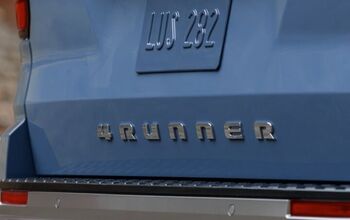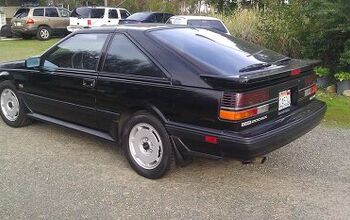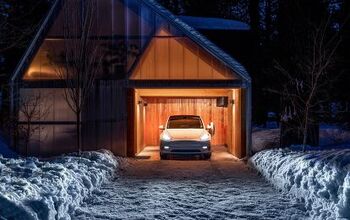Hammer Time: Why Toyota Lost Its Sport
Back in 1992 Toyota was at the forefront of quality engineering.
The Lexus nameplate had become the best selling import luxury brand in North America thanks to ES, LS and SC models that were easily among the most over-engineered vehicles of the time. 200k became not only an achievement for most Toyotas, but an expectation as well, and the models of that time were rolling testaments to a culture that prioritized the principles of Kaizen (continuous improvement) and Muda (the minimzation of waste) above all else.
Celicas and Camrys; two models that were largely designed for middle to upper middle class customers who had lived through the latest recession, were offered with padded dashboards that once had been the exclusive domain of luxury cars.
Even the formerly cost contained Corolla found upscale underpinnings by the end of 1992. The redesigned Toyota Corolla finally grew up and out in an American market that increasingly appreciated four door designs that were longer, lower and wider. The success of the Corolla was reflected in Toyota’s long-time flagship, the Supra. The following year, a long overdue release of the new Toyota Supra Turbo would seem to check off all the attributes one could ever want in a sports car.
Everyone bought the Toyota sedans and ‘sporty’ coupes; but folks rarely bought the true sports cars.
The Japan-centric Supra design coupled with the Celica All-Trac Turbo and MR2 Turbo came to form what could only be described as a weighty dilemma. Toyota wanted to over-engineer their vehicles to such a fanatical degree that, yes, everything could last for nearly 20 years. But the sports car you chose would not be nearly as exciting to drive as other lighter vehicles of the time that cost far less money.
Enthusiasts who would usually want to opt for a $25,000 Celica All-Trac would see an Eclipse GSX for $7,000 less and go straight to the Mitsubishi dealer. Eagle dealers would often provide even better pricing for the mechanically identical Eagle Talon TSi, with a longer warranty than either company. Meanwhile the more cost competitive Toyota Celica GT-S, which still sold for north of $20,000, would offer a woeful 130 horsepower engine and nearly 3000 pounds of heft for the enthusiast.
The Toyota Celica GT-S and All-Trac would sell fewer than 8,000 units a year.
It wasn’t just the Eclipse and Talon along with the short-lived Plymouth Laser that were far beyond Toyota’s grasp. The Acura Integra was lighter and more fun to drive. As were the 240SX, the Honda Prelude, and the Ford Mustang which truly shed its decrepit old Detroit image by the time it was redesigned in 1994. These largely successful models gave birth to a long line of fun to drive vehicles, both two door and four door models, that would let these manufacturers keep their pulse on younger buyers.
So did Toyota take on these upstarts? Nope, they gave up in the typical Toyota way back then of letting the model languish to the point of irrelevance once the market demographics seemingly started to change.
There was a rightness to that decision. Sport coupes and hatchbacks largely went downhill for the next fifteen years. But there was a casualty that came from that decision which inflicted permanent damage on the Toyota brand.
Toyota became the boring car company, while sportiness slowly migrated to all segments of the marketplace.
It wasn’t just the gaping blind spot that was Toyota’s continuing inability to attract enthusiasts to the brand which alienated millions of potential buyers.
It was the actual production cycles for the less popular Toyota products.
By the early 1990’s, Toyota had began to stray from the four to five year model cycles that yielded a younger buying audience that was increasingly anti-Detroit and Toyota loyal. Instead of building on this tide of favorable demographics, Toyota began to abandon it on a global basis. The last Toyota Supra was sold from 1993 all the way through 2002 in Japan, 10 model years. Slow sales led to a cancellation of the Supra in the United States by 1998. Even though the MSRP for their was discounted at one point by nearly $10,000.
The Celica, the last of the sporty 1990s Toyotas, only received a faint redesign in 1994 with all of the underpowered powertrain carried forward until the end of the decade. Same engine and transmission as the Camry. Same slow acceleration and lipstick light performance virtues. For the sole sake of cost containment and amortization, Toyota would essentially market the same vehicles on a global basis with little more than a price reduction for one and a half-hearted redesign for the other.
This behavior would pave the way for the decade that followed.
These two now defunct models, along with the last generation MR2 Turbo, represented the truly sad state of Toyota’s focus on the bottom line. While Ford gave the Mustang a $750 million resurgence that would add a youthful halo to their entire model lineup, and other manufacturers carried forward their sport coupe DNA into their four door models, Toyota only invested in a limited halo effect with their sports cars.
Only the top models received the best engines and powertrains while the rest of the line-up utilized whatever parts bin materials could be had, regardless of their real world competitiveness.
This doomed Toyota’s future with young buyers even from 20 years back. In 1992, the three true sports cars left in Toyota’s line-up registered fewer than 10,000 units sold. By 1993 the MR2 Turbo and Celica All-Trac would be axed in North America. Leaving behind the Supra Turbo as the sole true remnant of Toyota’s sports car past.
Meanwhile, the market realities of the 1990’s would yield a gap in the Toyota brand that would evolve into a void and then a darkening chasm in the eyes of a new audience. By 1994, the redesigned Mustang would be chosen by nearly 150,000 consumers on an annual basis, and help Ford keep aim at a youthful audience that wanted far more than Camrys and Corollas.
Toyota North America mistook the two door market as being the only sporty market that would matter in the near-term future. Toyota had a point by removing itself in a segment that was in terminal decline and hopelessly unprofitable. Sports cars were on a severe downward trend in the late 1990’s, in spite of low gas prices, with everything short of the Mustang, Miata and Corvette losing it’s hold in the marketplace. Demographics were shifting in favor of four door vehicles, and most sporty four door models simply had a V6 and minimal suspension upgrades, if any at all.
That was easy enough to do for a while.
But for every 240SX and 300SX that went down with that change, there was a Nissan Altima that would more than make up for it. While the RX-7 and RX-8 became increasingly irrelevant, the Mazda 3 would become a global success.
This would allow both manufacturers to retain a key audience that Toyota was losing as time went on, and the quality differences that once made Toyota a market leader began to converge.
Nearly every other major automaker found a performance edge that Toyota could not replicate in the coming years. Chrysler’s Neon would decimate what little was left of the Tercel. The Honda Civic would handily outsell the Toyota Corolla with the under-40 crowd, which would help keep the Accord competitive with younger buyers. Even though Honda decided to make the Accord a conservative Camry alternative, by 2011 the average age of Accord buyers would be 50 vs 60 for the Camry.
Even the growth of Toyota’s best-selling Camry would be flagged by the slow selling Camry and Solara coupes that were far more like an old style Buick, than the youthful Accord coupe which would retain the sporty car DNA.
Toyota would still succeed in the 2000’s. But it would only do so within the scopes of quality and luxury.
As the 2000’s rolled in, Ford would continue to offer SVTs, ZXs, and GTs. Honda would release RSXs, TSXs and Si’s. Volkswagen would soon roll out everything from GTI’s and Phaetons, to TDIs and W8s. Even Chrysler would attract the more youthful and enthusiast oriented buyers with SRT’s and Hemis.
To the dismay of this growing sport-oriented audience, Toyota would let the last Celica whither on a seven year old vine and the Toyota MRS would get beat up by an ugly stick that would leave it as a one generation footnote in the company’s history. Nothing else that would bare the Toyota brand name would be worth a driving enthusiast’s consideration.
Today we do have sporty Toyotas, but we call them Scions. A brand whose survival is wholly derived from cars that have a limited audience.
Perhaps this is a good thing.
More by Steven Lang
Latest Car Reviews
Read moreLatest Product Reviews
Read moreRecent Comments
- El scotto Under NAFTA II or the USMCA basically the US and Canada do all the designing, planning, and high tech work and high skilled work. Mexico does all the medium-skilled work.Your favorite vehicle that has an Assembled in Mexico label may actually cross the border several times. High tech stuff is installed in the US, medium tech stuff gets done in Mexico, then the vehicle goes back across the border for more high tech stuff the back to Mexico for some nuts n bolts stuff.All of the vehicle manufacturers pass parts and vehicles between factories and countries. It's thought out, it's planned, it's coordinated and they all do it.Northern Mexico consists of a few big towns controlled by a few families. Those families already have deals with Texan and American companies that can truck their products back and forth over the border. The Chinese are the last to show up at the party. They're getting the worst land, the worst factories, and the worst employees. All the good stuff and people have been taken care of in the above paragraph.Lastly, the Chinese will have to make their parts in Mexico or the US or Canada. If not, they have to pay tariffs. High tariffs. It's all for one and one for all under the USMCA.Now evil El Scotto is thinking of the fusion of Chinese and Mexican cuisine and some darn good beer.
- FreedMike I care SO deeply!
- ClayT Listing is still up.Price has been updated too.1983 VW Rabbit pickup for sale Updated ad For Sale Message Seller [url=https://www.vwvortex.com/members/633147/] [/url] jellowsubmarine 0.00 star(s) (0.0) 0 reviews [h2]$19,000 USD Check price[/h2][list][*] [url=https://www.ebay.com/sch/i.html?_nkw=1983 VW Rabbit pickup for sale Updated ad] eBay [/url][/*][/list] Ceres, California Apr 4, 2024 (Edited Apr 7, 2024)
- KOKing Unless you're an employee (or even if you are) does anyone care where physically any company is headquartered? Until I saw this story pop up, I'd forgotten that GM used to be in the 'Cadillac Building' until whenever it was they moved into RenCen (and that RenCen wasn't even built for GM). It's not like GM moved to Bermuda or something for a tax shelter (and I dunno maybe they ARE incorporated there legally?)
- Fred It just makes me question GM's management. Do they save rent money? What about the cost of the move? Don't forget they have to change addresses on their forms. New phone numbers? Lost hours?

































Comments
Join the conversation
I remember years ago that it was very rare for any car maker to have just a four door offering. There was always a Coupe version and to some extent the car makers still do it (Honda Civic, Ford Focus) but its still pretty rare. The Big 3 Japanese makes were the best at diversifying each vehicle they had in the late 80s. The Nissan Sentra came in an amazing six forms (sedan, coupe, 3 dr hatch, 5 dr hatch, notchback sport, wagon). This still happens in Europe, surprised it doesn't happen anymore here.
You forgot about the Altezza/IS300 which was available through the 2005 model year.